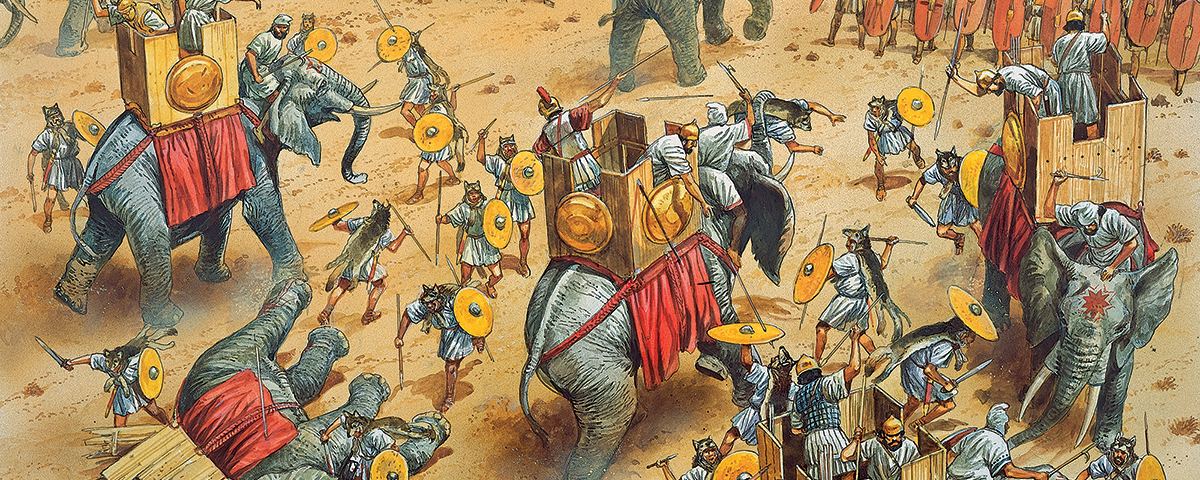Carthaginians first encountered war elephants in Sicily while battling Greek general Pyrrhus of Epirus in 278–276 BC. Daunted and impressed by the pugnacious pachyderms, they soon began importing North African forest elephants for their army, using Indian mahouts hired through Egypt, as well as riders from Syria, Numidia and other states. Tactical acumen in their use, on the other hand, took years and heavy casualties to perfect.
In 255 BC the Spartan mercenary general Xanthippus opened the Battle of Bagradas with a charge of some 100 elephants in the Carthaginian stomp of Consul Marcus Atilius Regulus’ Roman army. From then on both the Carthaginians and Romans overestimated the animal’s martial abilities. Four years later at Panormus (present-day Palermo), Sicily, Roman Consul Lucius Caecilus Metellus directed his entrenched light troops to harass the Carthaginian elephants with a rain of arrows and javelins, which caused the beasts to panic and turn on the Carthaginian troops, resulting in a rout that restored Roman confidence about facing elephants.
While Carthage ultimately raised a force of 300 war elephants, Hannibal took just 37 of them on his legendary 218 BC traverse of the Alps. Though most survived the arduous trek, they only figured significantly at the Battle of the Trebbia in December, when they panicked the Roman horses and auxiliaries. Many died in battle, and a subsequent cold snap killed all the rest but one.
When he returned to Carthage in 202 BC to face Consul Publius Cornelius Scipio at Zama, Hannibal gathered 80 elephants, though neither they nor their mahouts were experienced. Scipio sought to eliminate them as a factor by leaving lanes between his maniples, through which the beasts, lured by skirmishers, might charge without breaking up the Roman line. Scipio succeeded in his ploy and won the battle. MH





